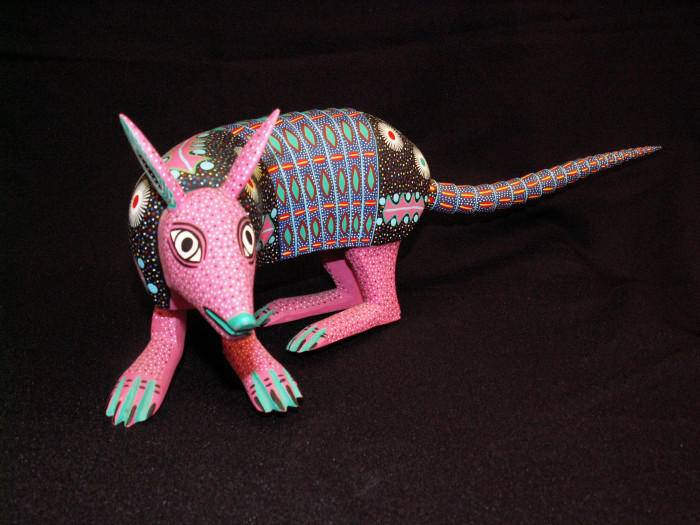Mexican Carved Figure: "Alebrije"
Collection: Commercial Connections
This "alebrije," or fantastic animal carving, comes from a woodcarving tradition for generations in several small villages outside the capital of Oaxaca, Mexico. Pedro Linares (1906 - 1992), a Mexican papier-mâché artist developed "alebrijes," combining the body parts of serpents, scorpions, lions, reptiles, and butterflies and accentuating a playful outlook on reality. Intricate surface patterning in an array of bright colors and detailed tactile textures, including spikes, bumps, and curves, add dimension. Most artisans use “copalillo” wood to carve their figures. The "copalillo" tree grows in warm regions of Oaxaca.
Once the figure has been carved, it is exposed to the sun. After making sure the figure is completely dry, the artisan sands the figure down. Sanding can take anywhere from an hour to a whole day. Once the figure has been sanded down, gasoline or some other type of liquid is applied to protect against insects like the moth or powder-post beetle. When the figure is completely smooth and any imperfections have been covered, a coat of color paint is applied over it. This will serve as base for the decoration.
Brushes and paintbrushes of all sizes are used in the painting of the figures. The decoration depends on the imagination, ability and dedication of each artisan. As for the painting, the first figures were colored in a rustic way. Maguey thorns, reed chips with tips and toothpicks were used for the decoration of points.
Source:
(MLA 7th Edition) Masuoka, Susan N. "Linares, Pedro (1906–1992)." Encyclopedia of Latin American History and Culture. Ed. Jay Kinsbruner and Erick D. Langer. 2nd ed. Vol. 4. Detroit: Charles Scribner's Sons, 2008. 207. Gale Virtual Reference Library. Web. 2 July 2013. Document URL http://go.galegroup.com.ezproxy.lapl.org/ps/i.do?id=GALE|CX3078903222&v=2.1&u=lapl&it=r&p=GVRL&sw=w http://www.solmarimports.com/ http://www.oaxacafinecarvings.com/artoaxacanwoodcarvings.htm
